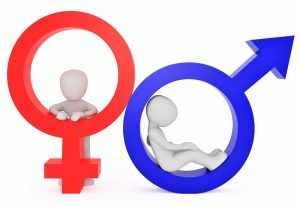Gender equality
Gender equality is a phrase that describes the absence of obvious or hidden differences between people based on gender. Differences can include discrimination in terms of opportunities, resources, services, benefits, decision-making power and influence. It is important to note that gender is a social construct based on social roles, not sexual differences per se. The dichotomous nature of gender lends itself to the creation of inequality that manifests itself in many dimensions of everyday life.
What is gender equality?
Gender equality means that men and women have the same rights, responsibilities and opportunities because these do not depend on the sex with which they were born but do take into account the interests, needs and priorities of groups.
About gender equality
Gender equality basically consists of the equal and non-discriminatory treatment of all people regardless of their gender or sex. This phrase can be applied to different areas of life, not only within the aspects mentioned above.
When we talk about gender equality in politics, it is probably the place where there is the greatest deficit of democracy. The constant marginalization of women in representative positions, the lack of equality in public positions and the difficulty for women’s interests to be evident in politics are common to see when there is no gender equality.
In the field of education, gender equality is observed in children. Care must be taken with the ways of teaching, and of giving equal treatment in classes, in addition to raising awareness in teachers to eliminate traditional macho attitudes.
History
Governments began to recognize equality between women and men as a right at the beginning of the twentieth century when it was recognized that women had the same legal status to participate in public life, both in elected positions and in the economy and work as men.
One of the main events in the history of equality was the adoption in 1979 of the Convention on the Elimination of All Forms of Discrimination, which synthesizes the set of rights that States must guarantee to women in civil, political, economic and social matters.
The long history of inequality in the United States laid the foundation for gender discrimination and generated further efforts to reduce it. In antiquity, women could not occupy a place in work, sports, or education, and favoritism toward men and unfair treatment toward women were given.
Objective
Empowering women and encouraging gender equality is essential to lighten sustainable development. Eliminating forms of discrimination against women and girls is not only a basic human right, but also positively affects other areas of development.
Eliminate discrimination against women and girls around the world, although some of the most difficult obstacles remain, such as violence and sexual exploitation, the unequal division of unpaid work and discrimination in public decision-making. It also seeks to ensure universal access to reproductive and sexual health and to give women equal rights in economic resources.
Importance
Gender equality has been of great importance to the world as it has succeeded in putting an end to many types of discrimination that have existed against women for centuries. Violence against women in both, public and private spheres, has been eliminated in many places, exploitation, child, early and forced marriage, and obsolete practices that damaged women’s bodies have been reduced.
Gender equality by country
- Argentina is one of the countries that has best applied gender ideology, in fact it ranks 5th among the countries with the greatest equality. However, the participation of the male sector continues to be higher. It has the “Argentine law against violence against women” that deals with domestic, labor, media, obstetric and reproductive freedom.
- Spain: In Spain, the European Institute for Gender Equality has recorded that most of the country has achieved an improvement in the issue, both in education and health. Improvements also include education and violence.
- Mexico: gender equality has grown but still has many things to overcome as the female sector in the country is still devoted in greater quantity to domestic tasks, in addition, there is a wide labor gap between men and women, inequalities persist within the field of politics and administration.
How it differs from gender equity
Gender equity means that women and men have equal conditions in the full exercise of their human rights, to contribute to national political, economic, social and cultural development and to benefit from the results. Gender equity gives opportunities to both sexes, but gender equality focuses mainly on the idea that women and men are different, so opportunities depend on the specific characteristics, contexts and needs in which they find themselves and which they have from the various spheres in which they interact, for example in the labor, educational, health, economic, cultural and social spheres in general.
Advantages of gender equality
Some of the advantages of gender equality are as follows:
- Gender equality is an engine of economic growth.
- Women in the labor market help reduce poverty, intensify national markets and reduce inequalities.
- It increases financial autonomy and improves the valuation of women’s work, helping to empower women within the family, enhance their self-esteem and sense of citizenship.
- Increased purchasing power has a positive impact on children’s schooling, nutrition and hence their future development.
Phrases on gender equality
Some phrases that have been said about equality are the following:
- “Whatever freedom we fight for; it must be a freedom based on equality. Judith Butler, Professor of Philosophy at the University of California, Berkeley.
- “They are not the two sexes superior or inferior to each other. They are simply different. Gregorio Marañón, physician and writer.
- The human race is like a bird and needs its two wings to fly. And at this moment, one of its wings is tied preventing us from flying high. Emma Watson, actress and ambassador for Woman Goodwill.
- “Equality for women is progress for all. Ban Ki-moon, Secretary General of the United Nations (UN).
- “We must stop buying the myth of gender equality. It’s not a reality yet. Beyoncé Knowles, singer.
Examples
Some examples of gender equality are the following:
- At present, men and women can hold political positions, there are women presidents and men presidents, among other positions.
- It is also permitted today for men and women to hold military posts, which was not previously allowed.
- There is equality in work, since both genders can work in positions of leadership.
- In the home, men and women can hold both domestic and economic positions.
How to cite this article?
Briceño V., Gabriela. (2019). Gender equality. Recovered on 3 January, 2025, de Euston96: https://www.euston96.com/en/gender-equality/










